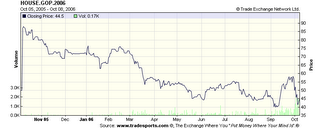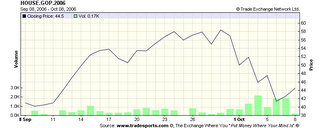How much does it matter where you get your news? Aren't all news outlets equal in the grand scheme of things--providing reporting and facts while we make up our own minds about things from an informed perspective? This is the common view of many people, but it's hardly true at all.
Most media markets provide only one choice of newspaper these days, which in turn are usually part of a larger chain. And those chains are themselves owned by an even smaller group of mega-corporate companies (eg., Viacom, Bertelsmann, News Corp.).
For example, the Atlanta Journal Constitution is owned by Cox Enterprises, a private company owned by two of Cox's daughters (and two of the richest women in America, worth over $10 billion each). It also owns 15 TV stations (ABC, Fox, CBS, NBC etc.) and of course cable/Internet (Cox Communications).
Well, perhaps like me you don't subscribe to a newspaper. What about TV/cable? There's more choice here right? Yes, to some extent. But there are two problems: 1) not all TV is watched equally (ratings) and 2) we find the same damn companies again (GE, Viacom, AT&T)!
An interesting article in yesterday's Independent provides some insight into the most popular TV news stations, Fox News. As you know, Fox plays a little game whereby they claim to be impartial while actually being ideologically Republican (their anchor on election night 2000 was Bush's first cousin!). Fair enough, most press follows some line or other (although unlike Fox they don't usually try to dupe their viewers).
Turns out though, that Fox News viewers are not only getting an ideological slant, but they're not even getting informed:
The Fox News formula may be good for ratings, but its effect on the public has been little short of toxic. A University of Maryland poll taken six months after the Iraq invasion demonstrated that Fox News viewers were more ignorant about world affairs than any other category of news consumers, but also had a stronger belief than anyone else in how well informed they were.
It's this kind of thing of course that gives legs to John Stewart and Stephen Colbert (who invented the idea of "truthiness"--things that aren't true but should be, such as a link between Saddam and Al-Qaeda--as a direct outcome of Fox's style). So if you watch Fox News, you're actually becoming relatively dumber and less competitive on the job market.
There's a small bit of hope however:
Interestingly, the pendulum is now starting to swing against Fox – both the style and the content of the station. Its ratings are down 28 per cent on last year, and its hard to conclude that its hard-charging ideological support of a now deeply unpopular President Bush is not at least partly to blame....
The zeitgeist has moved against Fox in other ways, too. Its non-stop cheerleading for Bush has made it an easy target – almost too easy – for a new generation of news satirists who have popped up on another cable station, Comedy Central. First Jon Stewart, of the Daily Show, and then his acolyte Stephen Colbert, who has broken out on his own and also delivered a brilliantly subtle anti-Bush routine at this year's White House Correspondents' dinner, have made regular and merciless fun of the most prominent Fox News hosts.
(To paraphrase Katha Pollitt in the Nation: "live by Jesus, die by Jesus".)
So not all news is equal--and not just in perspective, but in quality and informational content. Even if Fox News does go in decline (as one would hope) we're still left with the problem of the narrow overall range of the major news providers.
While the Internet obviously provides a much wider range of perspectives (just about as wide as the number of people with access to the Internet) there are no equivalents to big media (of course this may be a good thing). While some sites do attract major league numbers of visitors (Daily Kos for example attracts about 16 million people per month), most are in the infamous "long tail" pulling in maybe dozens of visitors (this blog included!).
Those enamored of the long tail like to argue that it is the collectivity that counts. While no single blogs attract large numbers, collectively they do. And presumably collectively they can influence political opinion. This might be true, or it might not be. How many people read blogs, and of those people, how many confine themselves to the meat of the long tail, to the top blogs such as Daily Kos, the Huffington Post or on the other side, Instapundit?
I'd also like to see a study of how much the top blogs remain constant. Daily Kos has been a leader since I've been looking at ranking sites such as Technorati, but Instapundit seems to have fallen down (now at #27 from a place in the top ten). Also, left and liberal blogs seem to dominate the list more than right or conservative blogs.
I love blogs and think they represent a powerful potential change in the way politics is carried out. I especially love the "people powered" notion of more realistic choices of politicians, ones who aren't run by consultants and, on the left, not just being Republican-lite (eg Lamont and Tester).
But I think this is a potential change, and even if it happens may be more like the insertion of additional perspectives rather than a wholesale sea change. I hope it happens. But there's a lot of institutional weight stacked up against it, not least because of the flabby opposition offered by the Democratic Party, so that blogs can't leverage much support there, they have to do it all themselves. Romantic, perhaps, but also way, way more difficult.











